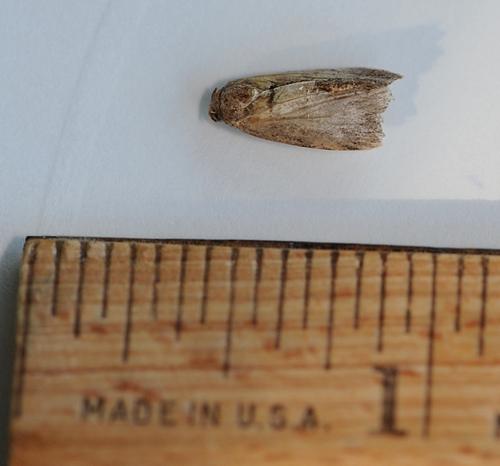Aug 31, 2010
The female Greater Wax Moth (Galleria mellonella) is a sneaky creature.
She flies around bee hives at night and when the opportunity presents itself--as it often does--in she goes to lay her eggs.
The egg hatch into larvae, which munch and crunch just about everything in sight.
The infestation is not pretty. Not only does it drive beekeepers bonkers, but a really bad infestation will drive the bees out.
Beekeepers remove the frames and freeze them, killing the larvae and any other pests that that might be in there--such as small hive beetles (Aethina tumida).
And an occasional honey bee.
The Mid-Atlantic Apicultural Research and Extension Consortium (MAAREC) provides excellent information on the wax moth.
MAAREC says the larvae are a mixed blessing: beekeepers dislike them but the larvae are "raised for use as fish bait, animal feed, scientific research and they are a good representative insect to use in Biology and Entomology classes."
She flies around bee hives at night and when the opportunity presents itself--as it often does--in she goes to lay her eggs.
The egg hatch into larvae, which munch and crunch just about everything in sight.
The infestation is not pretty. Not only does it drive beekeepers bonkers, but a really bad infestation will drive the bees out.
Beekeepers remove the frames and freeze them, killing the larvae and any other pests that that might be in there--such as small hive beetles (Aethina tumida).
And an occasional honey bee.
The Mid-Atlantic Apicultural Research and Extension Consortium (MAAREC) provides excellent information on the wax moth.
MAAREC says the larvae are a mixed blessing: beekeepers dislike them but the larvae are "raised for use as fish bait, animal feed, scientific research and they are a good representative insect to use in Biology and Entomology classes."
Attached Images:

A DEAD MOTH, a Greater Wax Moth, collected outside a bee hive. (Photo by Kathy Keatley Garvey)

THIS FROZEN FRAME from a hive near Winters, Calif., shows wax moth larvae and a small hive beetle (black insect on the top left). (Photo by Kathy Keatley Garvey)